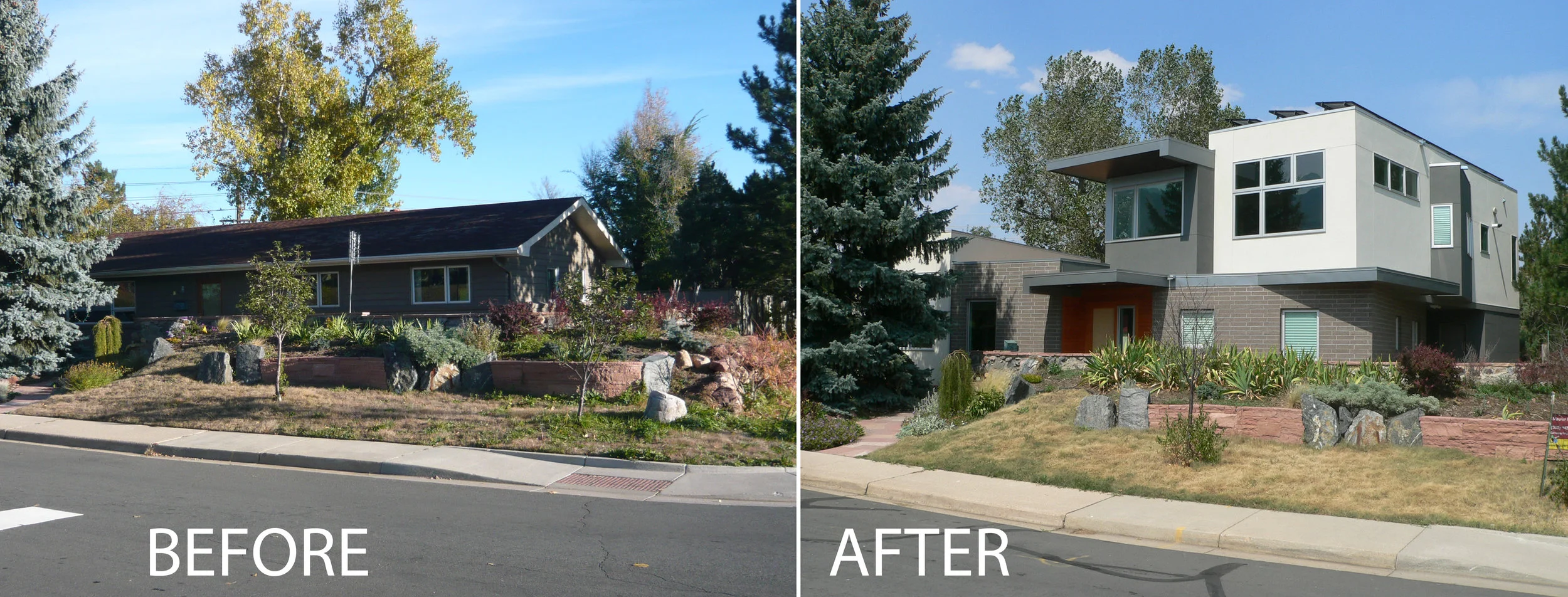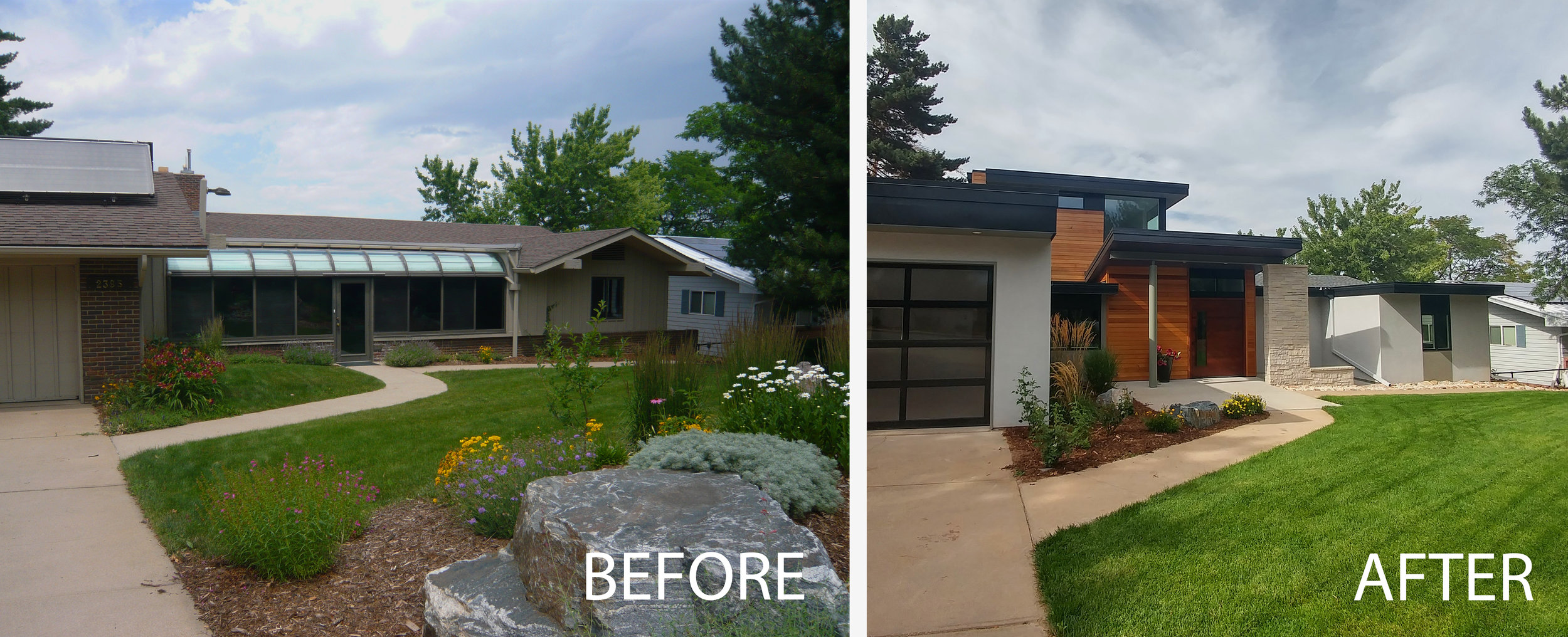Re-imagining South Boulder
We have worked on a number of large renovation and additions in South Boulder. These photos are all from projects in South Boulder that we have executed in the last 5 years or so. Even though the house’s may have been similar prior to these designs, the final solutions are all different variations on a theme.
Builder Model Homes
This Table Mesa area was developed in the 1960’s & 70’s and is comprised of large expanses of small- to mid-sized generic builder houses. A quick drive-by survey quickly shows that there are predominantly 5 or so different house types - the ranch, the split-level, the tri-level, the weird barn-like gambrel, and a few two-story gables. Many of these types have been modified by adding garages or basements, and of course, many have seen a number of additions and renovations over the years.
(for a very exhaustive study of the Table Mesa development, take a look at the Post WWII survey from the City of Boulder’s Preservation program)
As you might expect, the houses located on mesas or with Flatiron views, have been the first to see major changes. And, of course, as soon as one or two houses on a street start undergoing significant alterations, then that spurs on adjacent homeowners.
For the most part, these houses are small by the standard of new houses today. They range from just over 1,200 sf and top out at about 2,900 sf. The simple, small ranch houses are typically the smallest, with the ones without either a garage or basement often under 1,000 sf. As the property values have skyrocketed all over Boulder, these smallest houses are often the first to be improved and enlarged.
The First Renovation Generation
The most common renovation target is the tiny and outdated kitchen. Long before the desire for large kitchen islands and built-in steam ovens, these kitchens from the 1960’s were just the basic minimum with the basic set of appliances, little prep space and no pantry areas. These tiny kitchens are often cut off from the rest of the house and isolated against the rear wall. In almost every project, we modify and question the kitchen’s size, usage, location and hierarchy within the house.
Going for the Flow
The second most common alteration that our client’s request is to open up the main public rooms of the house - kitchen, living and dining areas - to create a large, flowing space that better responds to their daily schedules. Kitchens become the hub of the house as the creation of meals and the centrality of an island that serves as prep space, homework center, project surface and eating bar takes precedence over most other functions.
View Master
Finally, the master bedroom almost always gets an update, most typically as an addition. With so much of South Boulder tucked below the Flatirons to the immediate west, the strong desire to achieve these views is often accomplished by placing a Master Suite addition on a new second story. The City of Boulder places a number of limitations (solar shadow ordinance, bulk plane regulations, height limits) that create limited parameters for these second story additions, but most properties can add some additional area above the main floor level.
Upside Down House
Once in a great while, we will completely re-order the house and place the main living spaces - kitchen, living room and dining room - on the new second story to take advantage of the newly acquired views. Most homeowner’s find this level of reorganization challenging, the notion of sleeping below the daily living spaces so radically disrupts the habits established in a lifetime of “going up to bed” and sleeping closer to the stars than to the earth.
Tailoring the Off-the-Rack House
We may work on a limited number of models, but the solutions all are different, reflecting the variety of clients and views. The original generic builder houses were plopped down without regard to the potential views and sunlight, neighborhood character or landscape. I think of much of our work on these types of projects as fine-tuning - making modifications to more closely fit this building in its place on the earth, designing adjustments that reflect the life of a specific family’s needs and desires for the future.
These projects are much more challenging than designing new houses, but the transformations from before to after are often more satisfying.







